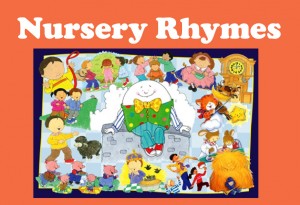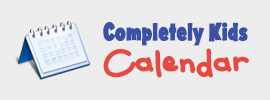Thanks to Dr. Shelley H. Allen – Reading Consultant and Children’s Literature Specialist
Originally published by Read Aloud Virginia
 ABC BOOKS
ABC BOOKS
Baker, A. (1994). Black and White Rabbit’s ABC. Kingfisher. Art and the ABCs are paired in this simple text.
Catalanotto, P. (2002). Matthew A.B.C. Atheneum.*
Mrs. Tuttle has 25 students, all named Matthew. Their last names begin with each letter of the alphabet except for Z. Then a new student arrives – guess what his name is?
Dodson, P. (1995). An Alphabet of Dinosaurs. Scholastic.
Dinosaur lovers rejoice! Beautiful paintings depict dinosaurs from A-Z in this informational alphabet book.
Ehlert, L. (1989). Eating the Alphabet: Fruits and Vegetables from A to Z. Harcourt. Colorful alphabet book of fruits and vegetables from around the world.
Fleming, D. (2002). Alphabet Under Construction. Holt.
A colorful, busy mouse works on each letter of the alphabet.
Jordan, T. (1996). Amazon Alphabet. Scholastic.
Jungle animals A-Z are shown in beautiful paintings.
Kontis, A. (2006). AlphaOops! The Day Z Went First. Candlewick.
The letter Z causes an uproar when he demands to go first for a change.
Lyne, A. (1997). A My Name is… Scholastic.*
Children’s names, places, and other nouns are pictured and named, A-Z.
MacDonald, S. (1986). Alphabatics. Bradbury Press. Each letter of the alphabet transforms into a picture.
Martin, B. & Archambault, J. (1989). Chicka Chicka Boom Boom. Simon & Schuster. A rollicking alphabet rhyme.
Neumeier, M. & Glaser, B. (1985). Action Alphabet. HarperCollins. The letters of the alphabet are creatively presented.
Rose, D. L. (2000). Into the A, B, Sea: an Ocean Alphabet. Scholastic. Rhyming couplets present fascinating facts about ocean creatures, A-Z.
Shannon, G. (1996). Tomorrow’s Alphabet. Scholastic.*
Readers must predict what each letter of the alphabet stands for “tomorrow.” For example, “A is for seed – tomorrow’s Apple.”
Wood, A. (2001). Alphabet Adventure. Blue Sky Press.
The lower-case alphabet letters set off on an adventure to help little “i” find his lost dot.
Wood, A. (2003). Alphabet Mystery. Scholastic.
In this vibrantly illustrated book, 25 letters of the alphabet set off in search of missing “x.”
COUNTING BOOKS
Baker, K. (1994). Big Fat Hen. Harcourt Brace.
Big Fat Hen counts to ten using the traditional nursery rhyme (“1, 2… buckle my shoe”).
Bang, M. (1983). Ten, Nine, Eight. Greenwillow.*
An African-American girl counts down from 10-1 in this gentle bedtime story.
Carle, E. (2005). 10 Little Rubber Ducks. HarperCollins. Ducks lost at sea have adventures and are counted 1-10.
Christelow, E. (1989). Five Little Monkeys Jumping on the Bed. Clarion.
Five naughty monkeys suffer the consequences of jumping on their bed in this repetitive rhyme.
Crews, D. (1986). Ten Black Dots. Greenwillow. Rhyming text shows numbers and dots, 1-10.
Edwards, P. D. (1998). Warthogs in the Kitchen. Hyperion. Warthogs count to ten and they make a mess baking cupcakes.
Falwell, C. (1995). Feast for Ten. Houghton Mifflin.*
In this rhyming story, an African-American family counts from 1-10 as they shop for a prepare a fun family dinner.
Fleming, D. (1992). Count! Henry Holt.
Brightly colored animals are featured as the reader counts from 1-10, then by 10s from 10- 50.
Hudson, C. W. (1995). Let’s Count Baby. Scholastic.*
An African-American toddler counts familiar objects (1-10) in this board book.
Marsh, T.J. & Ward, J. (1998). Way Out in the Desert. Northland Publishing.
Counts desert animals from 1-10 based on the traditional rhyme, “Over in the Meadow.” Readers are challenged to find the hidden number on each page.
Metzger, S. (2004). Five Little Sharks Swimming in the Sea. Scholastic.
Rhyming text (like Five Little Monkeys Jumping on the Bed) introduces the numbers 1-5.
Milich, Z. (2005). City 1 2 3. Kids Can Press.
Photos of familiar city objects with numerals, dots, and numbers in word form, 1-10.
Miller, V. (2002). Ten Red Apples: A Bartholomew Bear Counting Book. Candlewick. Bartholomew bear and friends count apples in this friendly story.
Rose, D. L. (2003). One Nighttime Sea. Scholastic.
Sea creatures are counted 1-10, then back to 1 again. Short and sophisticated text.
Walsh, E. S. (1995). Mouse Count. Sagebrush.
Adventurous mice are counted 1-10 and back again as they escape from a hungry snake.
Ward, J. (2002). Over in the Garden. Scholastic.
Counts insects from 1-10 based on the traditional rhyme, “Over in the Meadow.” Readers are challenged to find the hidden number on each page.
Ward, J. & Marsh, T.J. (2000). Somewhere in the Ocean. Scholastic.
Counts ocean creatures from 1-10 based on the traditional rhyme, “Over in the Meadow.” Readers are challenged to find the hidden number on each page.
BOOKS ABOUT COLORS
Baker, A. B. (1994). White Rabbit’s Color Book. Kingfisher. White rabbit dyes his fur in pots of red, yellow, and blue paint.
Crews, D. (1978). Freight Train. Greenwillow.
A train with different-colored cars runs along a track.
Fleming, D. (1992). Lunch. Henry Holt.
A hungry mouse munches his way through a host of colorful foods.
Fox, M. (2004). Where is the Green Sheep? Harcourt.
Colors and other concepts are introduced in this rhyming story.
Hubbard, P. (1996). My Crayons Talk. Scholastic.
A little girl uses short rhymes to describe the imaginary actions of her colorful crayons.
Martin, B. (1967, 1992). Brown Bear, Brown Bear, What Do You See? Henry Holt. Classic book with repetitive text introduces vibrant colors and animals.
McMillan, B. (1988). Growing Colors. Lothrop.
This book features photographs of colorful fruits and vegetables.
Milich, Z. (2004). City Colors. Kids Can Press.
Photos of familiar city objects highlight their colors.
Walsh, E. S. (1989). Mouse Paint. Harcourt Brace.
Three white mice play in jars of red, yellow, and blue paint.
Whitman, C. (1998). Ready for Red. Abbeville Kids.*
Part of the “My First Colors” series. Highlights red items in children’s environments.
Williams, S. (1989). I Went Walking. Harcourt Brace Jovanovich.
Predictable, repetitive text features colorful animals a child encounters on a walk.
Young, E. (1992). Seven Blind Mice. Philomel.
Colors, the days of the week, and counting 1-7 are introduced in this thoughtful fable.
CONCEPT COLLECTIONS
Freymann, S. (2005). Food for Thought: The Complete Book of Concepts for Growing Minds. Arthur A. Levine. Amazing pictures of fruit are used to teach these concepts: shapes, colors, numbers, letters, and opposites.
NURSERY RHYME BOOKS
Collections
Beaton, C. (2000). Mother Goose Remembers. Barefoot Books.
Cousins, L. (1999). The Lucy Cousins Book of Nursery Rhymes. Dutton.
Crews, N. (2004). The Neighborhood Mother Goose. Greenwillow.* Features photos of children and families in the city.
dePaola, T. (1985). Tomie dePaola’s Mother Goose. G.P. Putnam’s Sons. Engelbreit, M. (2005). Mary Engelbreit’s Mother Goose. HarperCollins.
Gliori, D. (2000). The Dorling Kindersley Book of Nursery Rhymes.
Langley, J. (1991). Rain, Rain Go Away! A Book of Nursery Rhymes. Dial. Lobel, A. (1986). The Random House Book of Mother Goose. Random House.
Long, S. (1999). Sylvia Long’s Mother Goose. Chronicle Books.
Opie, I. (1999). Here Comes Mother Goose. Candlewick Press.
Collection of over 60 nursery rhymes, with animal illustrations by Rosemary Wells.
Opie, I. (1996). My Very First Mother Goose. Candlewick Press.
Another collection of over 60 nursery rhymes, with animal illustrations by Rosemary Wells.
Oxenbury, H. (2004). The Helen Oxenbury Nursery Collection. Knopf.
Single Nursery Rhyme Books
Aylesworth, J. (1990). The Completed Hickory Dickory Dock. Atheneum. Expanded version of the traditional rhyme.
Hoberman, M. A. (2000). The Eensy-Weensy Spider. Little, Brown.
Expanded version of the nursery rhyme; includes music and hand motions.
Pinkney, B. (2006). Hush Little Baby. Greenwillow.*
Illustrations of an African-American family in the early 1900s accompany this familiar lullaby.
Trapani, I. (1996). I’m a Little Teapot. Charlesbridge. Includes expanded verses of the traditional song.
Trapani, I. (1999). Row Row Row Your Boat. Whispering Coyote Press. Additional verses and a family of bears are featured in this picture book.
Trapani, I. (1994). Twinkle, Twinkle Little Star. Whispering Coyote Press. The familiar rhyme with additional verses.
Williams, S. (2002). Old MacDonald in the City. Golden Books Publishing.* A city twist on the classic “Old MacDonald Had a Farm” rhyme.
Winter, J. (2000). The House that Jack Built. Dial.
The traditional nursery tale with a surprise ending. Includes a rebus puzzle on each page.
Related Books
Chorao, K. (1999). Knock at the Door and Other Baby Action Rhymes. Dutton. Features diagrams of hand and body motions to go with familiar rhymes.
Lamont, P. (1990). Ring-a-Round-a-Rosy. Little, Brown and Company. Includes nursery rhymes, action rhymes, and lullabies.
Prelustky, J. (Ed.). (1986). Read-Aloud Rhymes for the Very Young. Knopf. Anthology of over 200 poems for young children.
*Books with multicultural characters are starred.

 Birthdays
Birthdays